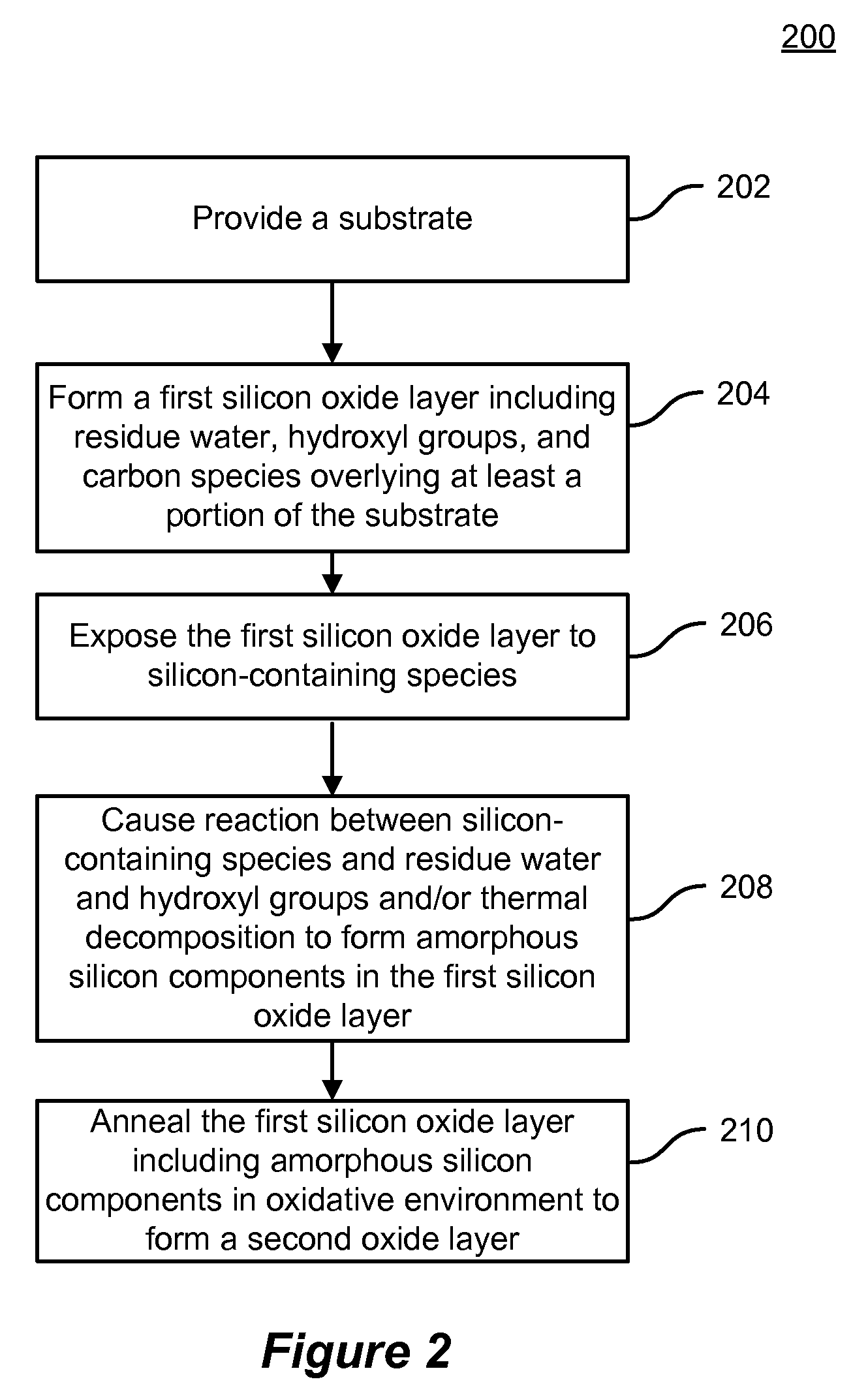Method and system for improving dielectric film quality for void free gap fill
a dielectric film and void-free technology, applied in the field of dielectric film quality improvement, can solve the problems of large height-to-width ratio gap and trench, fabrication problems, and difficulty in completely filling the gap and trench in these structures without creating, so as to improve the quality of dielectric film morphologically and increase the density
- Summary
- Abstract
- Description
- Claims
- Application Information
AI Technical Summary
Benefits of technology
Problems solved by technology
Method used
Image
Examples
Embodiment Construction
[0021]Methods and systems are described for improving quality of the dielectric film morphologically adapted over various semiconductor device structures. More particularly, embodiments of the invention provide methods and system of forming silicon oxide film with increased density to achieve void free gap fill for trenches with a high aspect ratio. For example, the invention may be applied to form high quality silicon oxide films for filling narrow STI trenches, among other applications.
[0022]Flowable silicon dioxide films deposited by chemical vapor deposition techniques from silicon-containing precursors (e.g., organosilicates) and remote plasma generated atomic oxygen have been applied to STI applications. The as-deposited flowable oxide films may initially have relatively low film density due in part to ingredients like residual water and carbon species, as well as significant hydroxyl groups. During the deposition of the flowable oxide film or after certain amount of flowable ...
PUM
| Property | Measurement | Unit |
|---|---|---|
| temperature | aaaaa | aaaaa |
| pressure | aaaaa | aaaaa |
| temperature | aaaaa | aaaaa |
Abstract
Description
Claims
Application Information
 Login to View More
Login to View More - R&D
- Intellectual Property
- Life Sciences
- Materials
- Tech Scout
- Unparalleled Data Quality
- Higher Quality Content
- 60% Fewer Hallucinations
Browse by: Latest US Patents, China's latest patents, Technical Efficacy Thesaurus, Application Domain, Technology Topic, Popular Technical Reports.
© 2025 PatSnap. All rights reserved.Legal|Privacy policy|Modern Slavery Act Transparency Statement|Sitemap|About US| Contact US: help@patsnap.com



